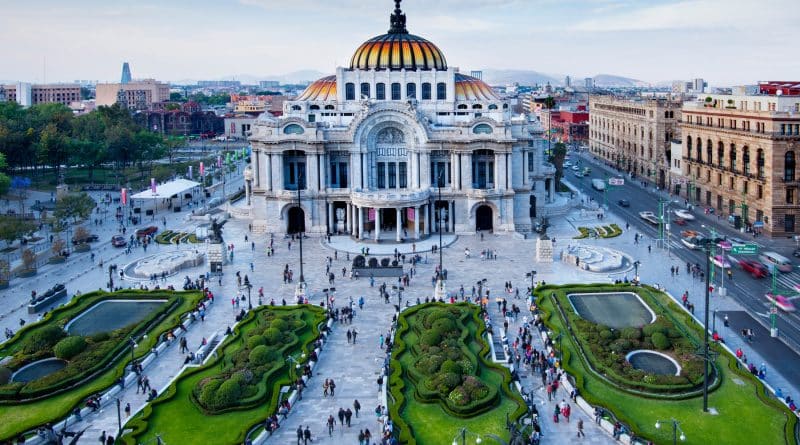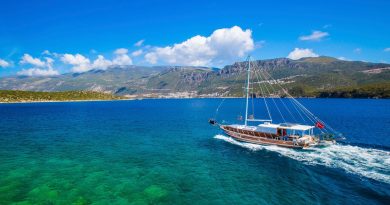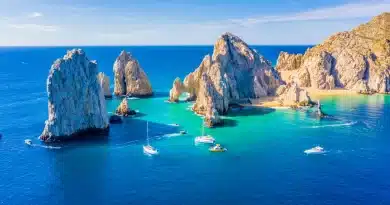The Most Clean and Green Tourist Spot in Mexico
Most tourists in Mexico have simple needs for their vacation time: sandy beaches, hot weather, and a party atmosphere. Some tourists look for a more authentic cultural experience or opportunities to connect with nature, which Mexico offers in abundance.
Connecting with nature is usually not a priority in the larger tourist centers. The natural environment mostly serves as the background for tourist activities – it represents the postcard fantasy that attracts visitors who typically give little or no thought about the cleanliness of the air, water, and soil (or sand). The local environment is not given much thought by foreigners or by Mexicans, so it’s no surprise that environmental pollution is a large, but largely ignored, problem.
The dumping of untreated sewage and garbage into rivers and coastal waters is among the worst of Mexico’s sins against the environment. Generally, I have seen the worst environmental practices in beach towns and resort areas, which makes the resort area of Huatulco an even more impressive achievement.
Clearwater at every beach, tap water you can drink, recycling programs, and an absence of garbage on the manicured streets and boulevards — Huatulco is a different reality in a country known for loose regulation and management of many things that are taken for granted in more developed nations.
Huatulco is a relatively small and unknown resort area centered near the town of La Crucecita in the state of Oaxaca (pronounced wa-ha-ca), on Mexico’s southern Pacific coast. Developed years after Cancun, Puerto Vallarta, and other popular destinations, Huatulco was designed to be a clean, green destination.
The results of such planning and management are precise, especially throughout the area’s nine bays and 36 beaches. Every beach I visited had crystal-clear water, which made it easy to enjoy the schools of fish swimming around me. Visibility for snorkeling is often deep as thirty feet.
Modern water treatment plants enable clean water and beaches in the Huatulco bay area. Several local beaches have been certified as ‘Blue Flag’ and ‘Clean Beach’, which are global standards. Huatulco was also the first tourist community in North America to be certified by EarthCheck, the world’s leading scientific benchmarking certification group for the tourism industry.
The international recognition is for Huatulco’s policies and efforts in energy and water consumption, recycling, waste, and sewage treatment, and low carbon emissions. Habitat conservation is also part of the commitment. The government limits commercial and residential development to a mere 28 percent of the coastal area – the rest is designated as a nature preserve that is never to be developed.
It’s surprising and inspiring to see that the majority of the area’s coastline is completely undeveloped, including several bays that are accessible only by boat. UNESCO designated the Municipality of Santa Maria Huatulco and Huatulco National Park as biosphere reserves.
The people of Huatulco know that the area is special and there is an authentic pride behind tourism promotion and hospitality. The hotel association and tourism office were very responsive to my visit and I experienced a range of hotels and attractions in the area:
Hotel Binneguenda: a beautifully maintained colonial-style property that was the first hotel built in Huatulco. Popular with young families, it’s centrally located and employs some of the most cheerful staff I’ve seen anywhere.
Villas Fa-Sol: a small, unique beachfront getaway in a gorgeous garden setting with Mediterranean-style suites. It’s a family-owned property that represents Huatulco’s unique qualities: tranquil, green, authentic, and warm hospitality.
Dreams Huatulco: a large, all-inclusive resort hotel on one of the best swimming beaches in the area. Crystal-clear water directly in front of large resorts like Dreams demonstrates the real difference between Huatulco and every other tourist center on Mexico’s Pacific coast.
Villa Azomalli: a large villa home with ocean and mountain views. Well-suited for small groups, and weddings. A wonderful Mexican chef prepared our meals, a key feature of the private villa experience.
Marina Park Plaza: a newer condo hotel popular with Canadians and Americans. The large condo apartments with kitchens attract guests for longer stays of 2 weeks to 2 months or more. Their staff was bilingual and very professional.
Castillo Huatulco: a smaller, all-inclusive hotel with a beach club on Chahue Beach. Castillo is a very friendly place where guests got to know each other quickly. It’s an older property that has a loyal guest following.
Temazcal Prehispanico: a wonderful place where we enjoyed Temazcal ‘sauna’ sessions, aromatherapy, music therapy, mud applications for the skin, and massage. A unique experience and very affordable, much like Huatulco in general.
Copalita Ecological Park: The earliest remains of this pre-Hispanic archeological site date back 2,500 years. Ancient buildings, a museum with beautiful artifacts, and walking trails that overlook the Copalita river and beach.
“We want Huatulco to be set apart from other destinations, to be recognized as a sustainable green tourist place,” says Esthepania Hernández Sánchez of the Huatulco tourism office. “Huatulco tourists want to visit a peaceful place that is ideal to rest and enjoy nature,” she adds. “For us, it is important to offer clean beaches and green areas not only because it gives a better quality of life to the local community but also a better experience to tourists.”
Tourists in Huatulco certainly benefit from that quality of life advantages, whether or not they appreciate that the water they swim and shower in, is clean. Or that the seafood they eat comes from clean waters.
Huatulco is a hidden gem, a bright green spot in Mexico’s environmental greyness and tourist center overdevelopment. Fortunately, it’s not for everyone. Huatulco attracts people who care about its unique qualities; people who are not looking for just another place with hot weather and cheap beer. The best ambassadors of Huatulco will continue to spread the word to those who desire clean, green, authentic tourism.




